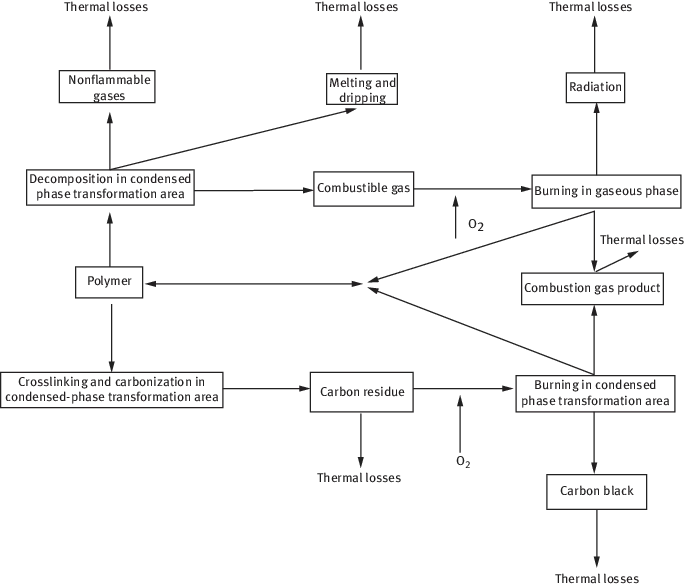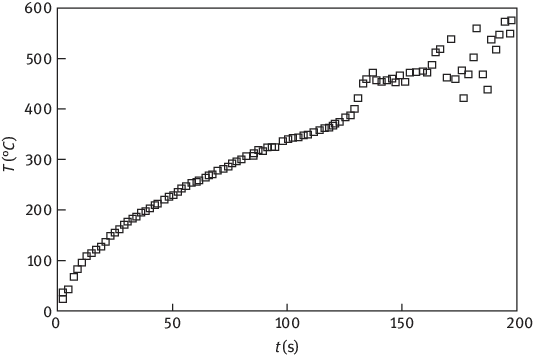
eBook - ePub
Theory of Flame Retardation of Polymeric Materials
Li Jianjun, Ou Yuxiang
This is a test
Condividi libro
- 288 pagine
- English
- ePUB (disponibile sull'app)
- Disponibile su iOS e Android
eBook - ePub
Theory of Flame Retardation of Polymeric Materials
Li Jianjun, Ou Yuxiang
Dettagli del libro
Anteprima del libro
Indice dei contenuti
Citazioni
Informazioni sul libro
Flame retardant materials are of vital importance in guaranteeing personal security. Especially the demand for non-toxic, low smoking, polymerized flame retardants increases and new materials enter the market. The authors present the fundamental theory of polymer combustion, compare different flame retardants, describe smoke suppression mechanisms, and explain analyzing techniques for new materials.
Domande frequenti
Come faccio ad annullare l'abbonamento?
È semplicissimo: basta accedere alla sezione Account nelle Impostazioni e cliccare su "Annulla abbonamento". Dopo la cancellazione, l'abbonamento rimarrà attivo per il periodo rimanente già pagato. Per maggiori informazioni, clicca qui
È possibile scaricare libri? Se sì, come?
Al momento è possibile scaricare tramite l'app tutti i nostri libri ePub mobile-friendly. Anche la maggior parte dei nostri PDF è scaricabile e stiamo lavorando per rendere disponibile quanto prima il download di tutti gli altri file. Per maggiori informazioni, clicca qui
Che differenza c'è tra i piani?
Entrambi i piani ti danno accesso illimitato alla libreria e a tutte le funzionalità di Perlego. Le uniche differenze sono il prezzo e il periodo di abbonamento: con il piano annuale risparmierai circa il 30% rispetto a 12 rate con quello mensile.
Cos'è Perlego?
Perlego è un servizio di abbonamento a testi accademici, che ti permette di accedere a un'intera libreria online a un prezzo inferiore rispetto a quello che pagheresti per acquistare un singolo libro al mese. Con oltre 1 milione di testi suddivisi in più di 1.000 categorie, troverai sicuramente ciò che fa per te! Per maggiori informazioni, clicca qui.
Perlego supporta la sintesi vocale?
Cerca l'icona Sintesi vocale nel prossimo libro che leggerai per verificare se è possibile riprodurre l'audio. Questo strumento permette di leggere il testo a voce alta, evidenziandolo man mano che la lettura procede. Puoi aumentare o diminuire la velocità della sintesi vocale, oppure sospendere la riproduzione. Per maggiori informazioni, clicca qui.
Theory of Flame Retardation of Polymeric Materials è disponibile online in formato PDF/ePub?
Sì, puoi accedere a Theory of Flame Retardation of Polymeric Materials di Li Jianjun, Ou Yuxiang in formato PDF e/o ePub, così come ad altri libri molto apprezzati nelle sezioni relative a Technology & Engineering e Materials Science. Scopri oltre 1 milione di libri disponibili nel nostro catalogo.
Informazioni
Generally speaking, the combustion process of polymers can be divided into five stages (Figure 1.1) [1] in time, which includes thermal decomposition, ignition, propagation, stable combustion and combustion attenuation. At the same time, these five stages can also be separated in space, such as surface-heating area, condensed phase transformation area (decomposition, crosslinking, carbonization) and vapor-phase combustible combustion area. Figure 1.2 shows the unit model of polymer combustion [2].

Figure 1.1: Five stages of polymer combustion [1].
Due to their characteristics, there will be some special thermal behaviors of polymer during the heating procedure, such as glass transitions, softening, melting, expansion, foaming, shrinkage, etc [3].
In this chapter, we will not only explain the five stages of polymer combustion but also analyze the smoke, toxic and corrosive products produced during the combustion procedure to provide some theoretical foundations for the discussion of the flame-retardation mechanisms of polymers.
1.1 Thermal decomposition
1.1.1 Overview
When the thermoplastics were heated, evaporation and pyrolysis of the solid phase were considered to be confined to a thin layer, namely condensed-phase/vapor-phase interface. Generally, when the polymer is heated, it will be first thermally degraded into pieces or monomers or fragments with low-molecular weight, and the escape rate of the latter is concerned with the mass transfer process [4, 5].

Figure 1.2: Unit model of polymer combustion [2].
The thermal decomposition of polymers is the first step for the cause and development of combustion, and it is very important for estimating the reaction of materials to fire, synthetizing heat-resistant polymer and recycling waste polymer.
When an external heat source is put on the material, the material temperature gradually rises. An external heat source may be produced directly from the flame (by radiation and convective heat transfer), the hot vapor (by conduction and convection heat transfer) and the hot solid material (by heat conduction). When heated, heating rate of material not only depends on external heat flow rate and temperature difference but also is related to specific heat capacity, thermal conductivity and carbonization, evaporation and other changing latent heat of the material.
Under the intense radiation near the hot objects, the surface of polymer will be heated rapidly, and its temperature rises with the square root of thermal radiation time. Taking polyethylene (PE) as an example, when the radiation intensity is 36 kW/M2 (which is equal to the blackbody temperature of 613 °C), its surface temperature rising based on time is shown in Figure 1.3 [6].

Figure 1.3: Relationship between polyethylene surface temperature and time [6] under a radiation intensity of 36 kW/M2.
If the radiation intensity is low, the highest surface temperature of polymer would not be enough to ignite polymer, as well as would have low thermal diffusivity and thin thermal layer. Thus, polymer is difficult to be ignited (the ignition temperature of polymethyl methacrylate [PMMA] is 250–350 °C, whereas that of PE is 330–370 °C), and only thermal decomposition will occur [7].
When the temperature of polymer rises up to a certain level, it begins to degrade, and the initial temperature of degradation is usually the temperature of bond rupture that has the worst thermal stability. During this period, polymer could still be intact, but the weakest bond ruptures often change the color and luster of polymers. There are two forms of degradation: nonoxide degradation and oxidative degradation. The former occurs without oxygen, whereas the latter should be heated and degraded with oxygen. Proportion of the most volatile decomposition temperature of the bonds and the instability of bonds in polymer are closely related to the degradation of polymer.
When most bonds rupture due to polymer decomposition, it enables a long chain of 104–105 carbon atoms to be decomposed into low molecular product. Then, the molecular weight of polymer gets smaller dramatically, polymer itself also begins to change, and this change can lead to a complete loss on its physical integrity or generate new substance with different properties, most of which are compounds with low molecular weight and many of these compound are inflammable materials, which can also volatilize into the vapor phase, thus reducing the total weight of polymer. For example, when thermal decomposition occurs, polyformaldehyde (POM) or PMMA can be decomposed into monomer formaldehyde or methyl methacrylate, respecti...